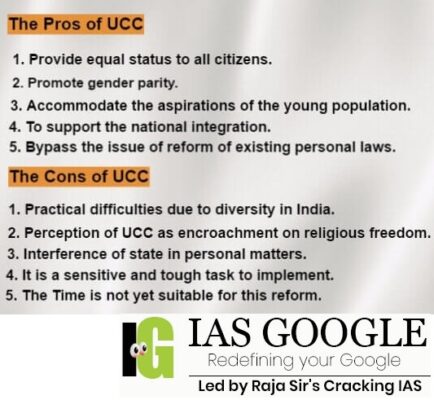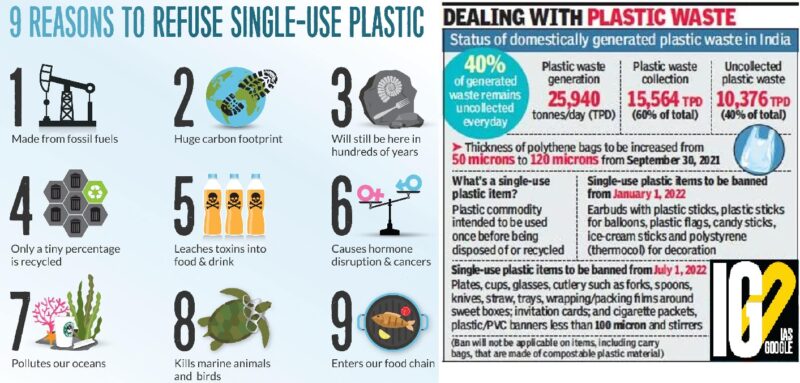- Home
- Prelims
- Mains
- Current Affairs
- Study Materials
- Test Series
Feb 15, 2022
LUC MONTAGNIER, NOBEL-WINNING VIROLOGIST WHO DISCOVERED HIV, DIES AT 89
Nobel-winning virologist Luc Montagnier, who died in Paris, was a brilliant and controversial figure who often challenged the core principles of science and scientific discourse.
 Early life of Luc Montagnier
Early life of Luc Montagnier

 How did slalom and giant slalom skiing evolve as a sport?
How did slalom and giant slalom skiing evolve as a sport?

 Uniform Civil Code:
Uniform Civil Code:
 What did the rating agencies say?
What did the rating agencies say?
 What is Single-Use Plastic?
What is Single-Use Plastic?

- The 89-year-old won the Nobel Prize for Medicine in 2008 for the discovery of the human immunodeficiency virus that causes AIDS.
 Early life of Luc Montagnier
Early life of Luc Montagnier
- Montagnier was born on August 8, 1932, in central France.
- After completing school, Montagnier went on to earn degrees in science and medicine and earned a PhD in virology from the University of Paris.
- He joined the Institute Pasteur in France as a professor and headed their Viral Oncology Unit for over two decades until 2000.
- It was at the Pasteur Institute that Montagnier undertook the crucial research that earned him the Nobel.
- In 1993, Montagnier co-founded the World Foundation for AIDS Research and Prevention, before heading off to the US to work at Queens College in New York.
- He has been awarded several medals, including the prestigious Légion d’Honneur, the Lasker Award and the Gairdner Award.
- In 1983, Montagnier was roped in by Dr Willy Rozenbaum, a Parisien doctor, to look into a lymph node of an AIDs-infected man.
- The acquired immune deficiency syndrome was a mystery at this point, and the scientists were in the dark about its cause, methods of diagnosis and treatment.
- Montagnier and fellow scientist Françoise Barré-Sinoussi isolated the retrovirus from this sample and named it LAV (lymphadenopathy associated virus).
- A year later, US scientist Dr Robert Gallo published a series of articles confirming the link between a retrovirus (which he named HTLV-III) and AIDS.
- This led to confusion over whether HTLV-III and LAV are the same, leading to a public fallout between the researchers.

- The government is estimating a “good amount” from the tax levy on capital gains despite a low tax rate for long-term and short-term.
- The government is open to ‘some tinkering’ in the varied rates and holding period for computation of capital gains tax on shares, debt and immovable property.
- At an estimate of Rs 80,000 crore of taxes from capital gains, it implies almost 6.4 per cent of the total direct tax collections of Rs 12.5 lakh crore were estimated in the revised stats for 2021-22.
- Under the Income Tax Act, gains from the sale of capital assets, both movable and immovable, are subject to ‘capital gains tax’.
- Movable personal assets such as cars, apparel, furniture is excluded from this tax.
- In the Budget for 2018-19, the government had introduced a tax for long term capital gains exceeding Rs 1 lakh at the rate of 10 per cent without allowing the benefit of any indexation but grandfathered gains till January 31, 2018.
- Equity shares or units of equity-oriented mutual funds held for more than 12 months are considered long-term, while house property held for 24 months is considered a long-term capital asset.
- Short-term capital gains are chargeable to tax at normal slab rates applicable to the taxpayer, except where such gain is arising from the sale of equity shares in a company or units of equity-oriented mutual fund or unit of a business trust (where STT has been paid), which attracts a tax of 15 per cent, while long-term capital gains in excess of Rs 1 lakh for equity is taxed at 10 per cent.
- The Budget for 2022-23 has introduced a capping of surcharge at 15 per cent for long-term capital gains on all types of assets irrespective of the capital gain.
- At present, the surcharge is capped at 15 per cent only for long-term capital gains on listed equity shares or a unit of an equity-oriented mutual fund or a unit of a business trust and other long-term capital gains are subject to a graded surcharge which goes up to 37 per cent.
- The surcharge is a fee added to any tax that has already been paid. The surcharge is a term that refers to an extra fee or levy.
- Personal income tax (on high-income slabs and the ultra-wealthy) and corporate income tax are the two largest surcharges.
- Surcharge revenue also goes to the Consolidated Fund of India (CFI), where it can be used for any reason, just like regular tax revenue.
- A surcharge is a tax on tax that is not levied for any particular reason, and the proceeds of surcharges are used by the Union government for whatever purpose it sees fit.
 How did slalom and giant slalom skiing evolve as a sport?
How did slalom and giant slalom skiing evolve as a sport?
- Alpine skiing is a type of ski sport that is made up of five different events — the downhill, Super G, Alpine combined, slalom and giant slalom.
- Various iterations of the sport have existed in history — be it the 1767 Norwegian military competition that involved skiing downhill with trees as obstacles or the evolution to ‘hill races’ in the late 1800s where skiers would take part in cross-country, slalom, and other events with the same skis.
- The modern-day iteration of slalom skiing was ratified in 1922 by Arnold Lunn for the British National Ski Championships. Fourteen years later, these changes were brought into the 1936 Winter Olympics in Germany.
- A cascading slope of snow is fixed with highly flexible red and blue plastic poles (gates) across a fixed course.
- The course has anywhere between 55-75 gates for men and 40-60 for women. The height from top to bottom of the course is usually between 180-220 m for men.
- Skiers are supposed to start at the top of the hill and in the shortest time, navigate their way between the poles to reach the finish line.
- In both events, the skier has a chance to put up a time that enters them in the Top 30 and post this, gets another chance to put up a winning time.
- While slalom is the shorter of the two events, it is the more technically challenging one since the gates are smaller and skiers have to focus on their zigzagging technique rather than their speed in this event.
- Usually that technique is dependent on tension. Core muscles need to remain tense while the skier flies downhill.
- The best slalom skiers in the world have a tendency to show extreme discipline with their arms — the lesser the movement, the more one’s body can be streamlined to zigzag through the course.
- Giant slalom on the other hand combines the technical aspect of slalom with the speed of downhill skiing events.
- The giant slalom event sees skiers reach up to 80 kilometers an hour. The increase in speed means that the ‘gates’ have to be larger.

- Concerned about the degradation happening in front of him, Marif rushed to tell the island’s council members, a local government body that oversees everyday affairs.
- The health of the mangroves had deteriorated to such a degree that the country’s Environmental Protection Agency (EPA) began to take notice and sent its scientists to the islands to conduct field surveys and laboratory analyses.
- Simultaneously, photographs of the dying mangroves in 11 islands in northern Maldives began flooding social media, showing large patches of grey in between the lush green mangrove forests that had been struggling to survive.
- The sentimental value attached by the Maldivian people to the mangroves meant that the government had to act quickly to find the cause.
- The Maldives is home to 15 mangrove species, known as ‘faa’ in the Dhivehi language, including some that are listed as critically endangered by the International Union for Conservation of Nature’s (IUCN) Red List.
- But among these, the country is most anxious about saving one particular species that the IUCN lists as being of ‘least concern’, the Bruguiera cylindrica.
- Found in several parts of tropical Asia, as well as in Australia, the Bruguiera cylindrica can grow up to 20 meters in height and has a greyish bark.
- While the ecological importance of mangroves has been well-documented, in the Maldives, the Bruguiera cylindrica has historically been an important plant, in part because it is a source of food in the country.
- Its propagules, a vegetative structure that detaches from the plant to give rise to a new plant, can be cooked and eaten in various ways.
- During this period, which later came to be known as ‘bodu thadhu’, or the ‘big famine’ in Dhivehi, islands like Kelaa, with large forests of kan’doo faa or the Bruguiera cylindrica, became areas with food secure populations.
- MILAN exercise will see participation of all major Navies including Quad countries, Russia and from West Asia amid tensions in Ukraine and developments in West Asia.
- This year’s Milan will see the participation of all Quad countries, with the U.S. being invited for the first time.
- The invitees include all Indian Ocean littoral states and countries from south-east Asia among others.
- For the 2020 edition of the exercise, 41 countries of which 30 had confirmed participation but the exercise was cancelled due to the COVID-19 pandemic.
- A Fleet Review is usually conducted once during the tenure of the President. Since Independence 11 PFRs have been conducted by the Navy, of which two have been International Fleet Reviews in 2011 and 2016. In terms of significance, the Navy’s Presidential review is second only to the Republic Day Parade, one official stated.
- More than 60 ships from the Navy, Coast Guard, Shipping Corporation of India and the National Institute of Ocean technology and submarines and more than 50 aircraft are expected to be part of the PFR this year.
- Over 44 ships will be at anchorage and one of the ships will be converted into the President’s yacht. The first PFR was held in 1953 for the first President Dr. Rajendra Prasad.
 Uniform Civil Code:
Uniform Civil Code:
- The Uniform Civil Code (UCC) calls for the formulation of one law for India, which would be applicable to all religious communities in matters such as marriage, divorce, inheritance, adoption.
- The code comes under Article 44 of the Constitution, which lays down that the state shall endeavour to secure a Uniform Civil Code for the citizens throughout the territory of India.
- The objective of Article 44 of the Directive Principles in the Indian Constitution was to address the discrimination against vulnerable groups and harmonise diverse cultural groups across the country.
- Dr. B R Ambedkar, while formulating the Constitution had said that a UCC is desirable but for the moment it should remain voluntary, and thus the Article 35 of the draft Constitution was added as a part of the Directive Principles of the State Policy in part IV of the Constitution of India as Article 44.
- It was incorporated in the Constitution as an aspect that would be fulfilled when the nation would be ready to accept it and the social acceptance to the UCC could be made.
- The origin of the UCC dates back to colonial India when the British government submitted its report in 1835 stressing the need for uniformity in the codification of Indian law relating to crimes, evidence, and contracts, specifically recommending that personal laws of Hindus and Muslims be kept outside such codification.
- Increase in legislations dealing with personal issues in the far end of the British rule forced the government to form the B N Rau Committee to codify Hindu law in 1941.
- The task of the Hindu Law Committee was to examine the question of the necessity of common Hindu laws.
- The committee, in accordance with scriptures, recommended a codified Hindu law, which would give equal rights to women.
- The 1937 Act was reviewed and the committee recommended a civil code of marriage and succession for Hindus.
 What did the rating agencies say?
What did the rating agencies say?
- Fitch, a rating agency, had stated that higher deficits and continued lack of clarity on medium-term consolidation plans in the recent Union Budget was its rationale for projecting of a downward trajectory in the country’s debt/GDP.
- The report concluded saying, “The government has little fiscal headroom at its current level to respond to possible shocks to growth.”
- Another agency, Moody’s, said the Union Budget was growth-oriented, credit positive for many issuers but the budgetary provisions posed fiscal challenges.
- Focus on capital expenditure, it said, supported near-term growth but challenged long-term fiscal consolidation.
- Additionally, the budget projected only a slight narrowing in the central government deficit.
- Rating agencies assess the credit worthiness or potential of an equity, debt or country.
- Their reports are read by investors to make an informed decision on whether or not to invest in a particular country or companies in that geography.
- They assess if a country, equity or debt is financially stable and whether it at a low/high default risk. In simpler terms, these reports help investors gauge if they would get a return on their investment.
- The agencies periodically re-evaluate a previously assigned ratings after new developments (example, Coronavirus pandemic or a geography-specific climate change), geo-political events or a significant economic announcement by the concerned entity.
- Their reports are sold and published in financial and daily newspapers.
- The three prominent ratings agencies, viz., Standard & Poor’s, Moody’s and Fitch subscribe to largely similar grading patterns.
- Standard & Poor’s accord their highest grade, that is, AAA, to countries, equity or debt with the exceedingly high capacity to meet their financial commitments.
- Its lowest grade is ‘D’, accorded to entities with high probability of payment default or breach of an imputed promise.
- This is particularly accorded in case the concerned entity has filed for bankruptcy.
- Its grading slab includes letters A, B and C with an addition a single or double letter denoting a higher grade.
- Moody’s separates ratings into short and long-term definitions.
- The former involves obligations maturing in thirteen months or less whereas the latter involves obligations maturing in eleven months or more.
- Its longer-term grading ranges from Aaa to C, with Aaa being the highest. The succession pattern is similar to S&P.
- The short-term ratings scale ranges from P-1 to NP, with P-1 being the highest.
- Fitch, too, rates from AAA to D, with D being the lowest. It follows the same succession scheme as Moody’s and Fitch.
- India recently undertook a nationwide awareness campaign to clean plastic and other waste from coastal areas.
- India supports the French initiative of a high ambition coalition on biodiversity beyond national jurisdiction.
 What is Single-Use Plastic?
What is Single-Use Plastic?
- Single-use plastics, or disposable plastics, are used only once before they are thrown away or recycled.
- These items are things like plastic bags, straws, coffee stirrers, soda and water bottles and most food packaging.
- Petroleum based plastic is not biodegradable and usually goes into a landfill where it is buried or it gets into the water and finds its way into the ocean.
- Single-use plastics are a glaring example of the problems with throwaway culture.
- Instead of investing in quality goods that will last, we often prioritize convenience over durability and consideration of long-term impacts.
- Our reliance on these plastics means we are accumulating waste at a staggering rate.
- We produce 300 million tons of plastic each year worldwide, half of which is for single-use items. That’s nearly equivalent to the weight of the entire human population.

- He stressed the need for collaborative efforts between the Central and State Governments towards the large-scale deployment of energy efficiency measures in potential sectors of the economy.
- He emphasized the need to have a state-specific agency dedicated to energy efficiency and conservation.
- He urged that the states should develop an action plan to achieve the assigned targets.
- He further said that the central government is working for a new and modern India, which cannot happen without modern power systems, and it look forward to working with all states and UTs to achieve this.
- The minister during the meeting highlighted that the commercial buildings should follow ECBS and the domestic buildings should follow ECO NIVAS and this should be part of the building by-law.









 Latest News
Latest News
 General Studies
General Studies